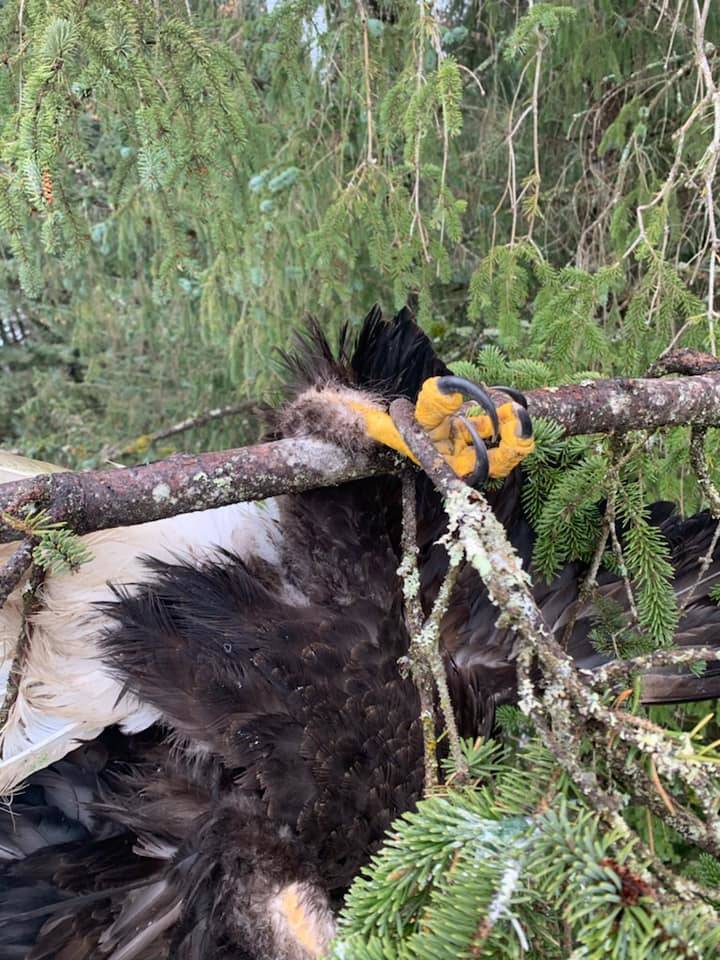A plaintive cry of a trapped bald eagle near the airport mobilized a variety of people from across Juneau to rescue the trapped bird.
“I spend a lot of time on the trail, like, daily,” said Laurie Craig, a former park ranger who initially spotted the bird. “I saw a fluffy white and dark thing that looked like an eagle that had been dead for a while. So I started making some calls.”
Those calls eventually summoned Kathy Benner of Juneau Raptor Center and Capital City Fire/Rescue to the scene.
“It was a good thing that Laurie Craig saw it, because I would never have seen ‘em from where she was,” said CCFR assistant chief Ed Quinto in a phone interview. “We had to make sure we were able to do it. Nobody got hurt, everything worked out really well.”
This marks one a rare joint effort between the raptor center and other organizations, Benner said.
“This is the first time I’ve had to work with (CCFR). Most rescues, we’re able to do on our own. It’s a rare thing to get a bird that’s out of reach,” Benner said. “The only other time that’s happened is last July when we had that eagle get stuck in the tree and a fish and wildlife biologist climbed the tree and got the bird.”
While CCFR occasionally rescues animals, Quinto said, helping to rescue an eagle was a novel experience.
“We rescued the national bird, the bald eagle, off a tree, with our ladder truck,” Quinto said. “We usually get calls for cats.”
J.D. McComas, a wildlife specialist for the airport, went up the ladder to where the eagle was stuck at about 70 feet and freed the bird before wrapping it in a towel.
“His foot was wedged there. He was stuck by that. We think at some point both legs were stuck. The right leg was what did him in,” Benner said. “We could have given some palliative care and gotten his left leg better, but his right leg had an old break right below the knee.”
It became apparent once the eagle was recovered that the bird was in very poor shape.
“He was basically starving. He was very thin. We think it happened about three months ago. He had mites,” Benner said. “His tail feathers were brushed and dirty. His chest muscles were very wasted. There was just too many strikes against this guy.”
Euthanasia was the most humane choice for the bird, Benner said.
“Taking suffering away is just as much part of this as rescuing and trying to rehabilitate,” Benner said. “They’re wild animals. They have to be able to hunt and catch food or else they can’t survive.”

